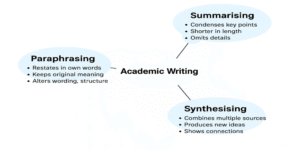Management Information Systems (MIS) are essential for supporting organisational decision-making across all levels of management. At the operational level, MIS plays a pivotal role in automating routine processes, reducing human error, and improving efficiency in areas such as payroll, inventory management, and sales reporting (Zorina & Zorin, 2025). By streamlining these activities, organisations free employees to focus on higher-value tasks, ultimately improving productivity.
This article examines operational-level MIS, focusing on its applications in payroll, sales reporting, and inventory management. It also explores Tesco’s implementation of MIS and evaluates the challenges and future directions of operational-level systems.
Understanding Operational-Level MIS
At the operational level, MIS is concerned with structured, repetitive tasks that underpin day-to-day business activities. These tasks typically involve transaction processing systems (TPS), which record and manage transactions such as payroll entries, point-of-sale (POS) data, and inventory updates (Laudon & Laudon, 2022).
The benefits of operational-level MIS include:
- Accuracy – automation reduces manual input errors.
- Efficiency – tasks such as payroll calculation are completed more quickly.
- Cost Savings – less reliance on manual labour.
- Timeliness – managers receive near real-time updates on key operational metrics.
Payroll Systems
One of the most common applications of MIS at the operational level is in payroll management. Payroll systems automate salary calculations, tax deductions, and benefits management, ensuring compliance with employment regulations and consistency in employee compensation (Whiteley, 2017).
For example, large retailers such as Tesco employ payroll systems that integrate with timekeeping and attendance records, ensuring accurate wage calculations for thousands of employees (Meng, 2024). This eliminates errors associated with manual data entry and reduces disputes between staff and employers.
Sales Reporting
Sales reporting systems form another critical application of operational-level MIS. Through POS systems, retailers automatically record every transaction, which is then aggregated into daily, weekly, and monthly sales reports (Saani, 2019). These reports enable managers to identify top-selling products, measure employee performance, and detect anomalies such as theft or errors.
In practice, Tesco has integrated sales reporting into its ERP and MIS platforms, providing real-time visibility into store-level and company-wide performance (Kukreja & Gupta, 2016). This allows Tesco to detect patterns such as regional variations in demand, enabling more precise marketing campaigns.
Inventory Management
Perhaps the most significant contribution of operational-level MIS lies in inventory management. Inventory systems automate stock tracking, replenishment, and forecasting to avoid overstocking or stockouts. Advanced systems employ techniques such as Just-in-Time (JIT) and Economic Order Quantity (EOQ) to optimise stock levels (Meng, 2024).
Tesco is a prime example of MIS in inventory management. The company uses automated systems to track product sales in real time, triggering reordering processes to avoid shortages (Potter & Disney, 2010). This system is supported by data-driven supply chain models, helping Tesco mitigate the bullwhip effect and maintain customer satisfaction.
Tesco: A Case Study in Operational-Level MIS
Tesco’s integration of MIS across its operations demonstrates how automation enhances efficiency:
- Payroll – Tesco’s payroll system integrates employee attendance data to automate wage processing, ensuring compliance with wage laws (Kukreja & Gupta, 2016).
- Sales Reporting – POS systems at Tesco stores feed into a central MIS, generating daily sales summaries that inform short-term marketing and staffing decisions (Farooq, 2021).
- Inventory Management – Tesco leverages advanced replenishment systems, reducing stockouts and waste by ensuring products are restocked based on real-time demand (Potter & Disney, 2010).
By combining these systems, Tesco has achieved operational resilience, improved accuracy, and reduced costs, positioning itself as a leader in retail efficiency.
Challenges in Operational-Level MIS
Despite its benefits, operational-level MIS faces several challenges:
- Data Quality – inaccurate input can still compromise the system’s output (Ring & Tigert, 2001).
- Integration Issues – linking payroll, sales, and inventory systems across multiple locations is complex.
- Cybersecurity Risks – sensitive payroll and sales data must be protected against breaches (Woods, 2022).
- Cost – the initial investment in MIS infrastructure can be significant, particularly for small businesses (Mukhopadhyay, 2009).
- User Resistance – staff may resist system adoption if adequate training is not provided.
For Tesco, managing such challenges involves continuous investment in IT infrastructure, employee training, and robust data governance strategies (Rahman et al., 2025).
Future Directions of Operational-Level MIS
The future of operational MIS will be shaped by:
- Artificial Intelligence (AI) – enabling predictive payroll analytics (e.g., turnover forecasting) and inventory forecasting (Stone & Hollier, 2000).
- Cloud Computing – offering scalable and cost-effective MIS solutions for global retailers (Luftman & Kempaiah, 2008).
- IoT Integration – using smart shelves and sensors to update inventory systems in real time (Richards, 2017).
- Blockchain – providing secure payroll processing and transparent supply chains (Whiteley, 2017).
Retailers like Tesco are already exploring these innovations, integrating AI-driven demand forecasting and IoT-based stock management into their MIS to further enhance efficiency and reduce costs.
Operational-level MIS plays a vital role in automating routine processes such as payroll, sales reporting, and inventory management, enabling organisations to reduce errors, improve efficiency, and focus on higher-value tasks. Tesco serves as a leading case study, demonstrating how MIS can transform retail operations through automation and data-driven decision-making.
While challenges remain, the integration of emerging technologies such as AI, IoT, and blockchain promises to further advance operational-level MIS. For businesses operating in highly competitive environments, mastering these systems is no longer optional but a necessity for survival and growth.
References
Farooq, M.U. & Comanoiu, A.M.B. (2021) Strategic Synergy: Leveraging Big Data and Information Systems for Competitive Advantage in the Digital Age. York St John University. [Available at: https://ray.yorksj.ac.uk/id/eprint/11156/].
Kukreja, G. & Gupta, S. (2016) Tesco Accounting Misstatements: Myopic Ideologies Overshadowing Larger Organisational Interests. SDMIMD Journal of Management. [Available at: https://www.researchgate.net/publication/309519208].
Laudon, K.C. & Laudon, J.P. (2022) Management Information Systems: Managing the Digital Firm. 17th ed. Pearson: Harlow.
Luftman, J. & Kempaiah, R. (2008) Key Issues for IT Executives 2007. MIS Quarterly Executive, 7(2), pp. 91–99.
Meng, S. (2024) Operation Management of Grocery Retailer in the UK: A Case of Tesco. Pacific International Journal. [Available at: https://rclss.com/pij/article/view/586].
Mukhopadhyay, J. (2009) Supply Chain Management: A Comparative Study Between Large Organised Food and Grocery Retailers in India. Citeseer. [Available at: https://citeseerx.ist.psu.edu/].
Potter, A. & Disney, S.M. (2010) Removing Bullwhip from the Tesco Supply Chain. Production and Operations Management. [Available at: https://www.researchgate.net/publication/228989569].
Rahman, M., John, R. & Garg, A. (2025) Technology Intelligence Framework for Smart Reverse Logistics and Sustainability. OPSEARCH, Springer. [Available at: https://link.springer.com/article/10.1007/s12597-025-00991-1].
Richards, G. (2017) Warehouse Management: A Complete Guide to Improving Efficiency and Minimising Costs in the Modern Warehouse. 3rd ed. Kogan Page: London.
Ring, L.J. & Tigert, D.J. (2001) The Decline and Fall of Internet Grocery Retailers. International Journal of Retail & Distribution Management, 29(6), pp. 264–271.
Saani, J.I. (2019) Management Information Systems. Intellectual Capital Enterprise Ltd. [Available at: https://www.researchgate.net/publication/340647719].
Stone, T. & Hollier, R.H. (2000) Electronic Data Capture and Operational Performance Monitoring: A Supply Chain Perspective. International Journal of Logistics. [Available at: https://www.tandfonline.com/doi/abs/10.1080/713682771].
Whiteley, D. (2017) An Introduction to Information Systems. Routledge: Abingdon.
Woods, M. (2022) Risk Management in Retail: Tesco PLC (2004–2019). In: Risk Management in Organisations. Routledge.
Zorina, O.A. & Zorin, A.V. (2025) Implementing Management Accounting Procedures into Management Control System Procedures: Tool Coordination. Statistics of Ukraine. [Available at: https://su-journal.com.ua/index.php/journal/article/view/474].









